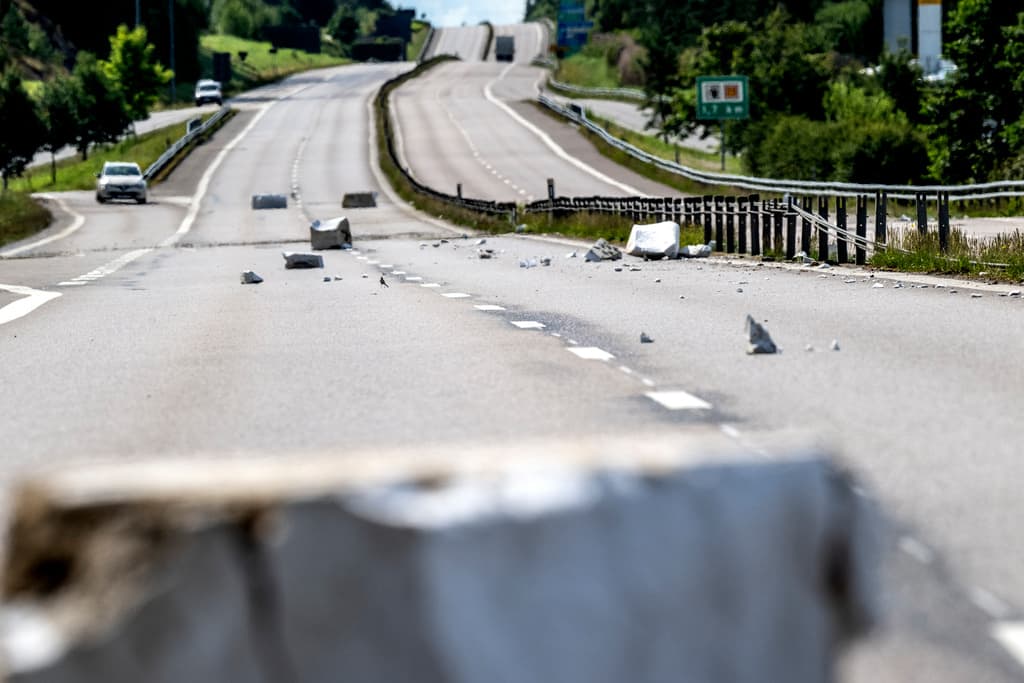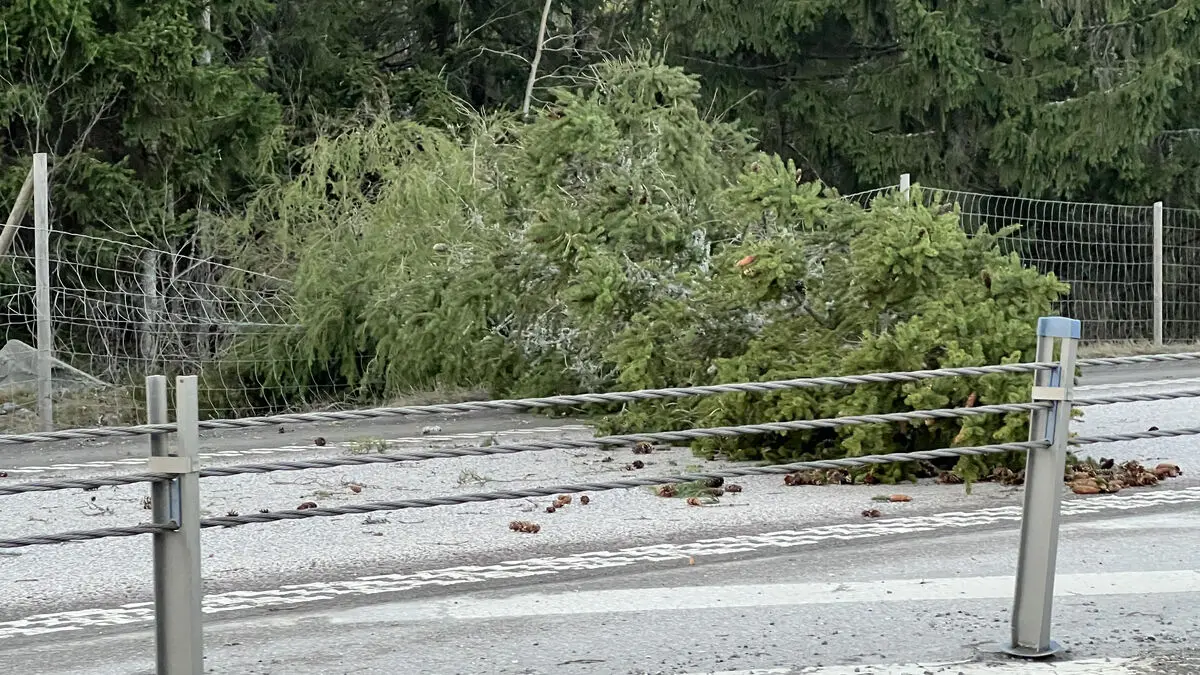Heavier rainfall, and flooding with landslides and erosion as a consequence. More extreme weather conditions will become more common in Sweden due to climate change and pose a challenge for the road network.
At the Swedish Transport Administration, they have been working on climate adaptations for several years and are reviewing, among other things, ditches along the roads so that they can handle larger amounts of water.
Water under the road surface
During Sunday's downpour, the E45 road was flooded near Lilla Edet, affecting large parts of the road surface. Large amounts of water have moved under the road surface and taken parts of the road construction with them. Among other things, parts of the foam insulation have broken loose from their anchorage and been carried away by the water.
Foam-like material, or cell plastic as it is called, is used to insulate under the road as protection against frost, explains Katarina Wolffram, press communicator at the Swedish Transport Administration.
When water that seeps into the ground freezes – frost – it expands. When more porous soil meets more solid soil, such as rock, it creates unevenness in the road surface. To make the transition smoother, foam-like material is used to insulate against the cold.
Common method
It may sound strange with foam, but it's a common method. But when such large amounts of water come, it takes most things with it, which is what has happened now near Lilla Edet.
How much more of what the road is resting on has been carried away remains to be seen. Upcoming investigations will show.
That's why it's difficult to give a safe prognosis for how long the road will be closed. There may be larger damages than those that are visible, says Katarina Wolffram.





